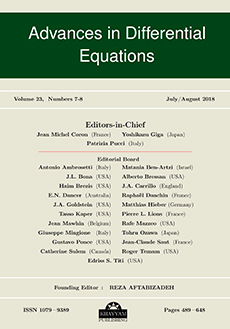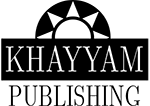Abstract
We investigate a two-phase free-boundary problem in heat propagation that in classical terms is formulated as follows: to find a continuous function $u(x,t)$ defined in a domain ${{\mathcal D}}\subset {\mathbb R}^N\times(0,T)$ which satisfies the equation $$ \Delta u+\sum a_i\,u_{x_i}-u_t=0\quad $$ whenever $ u(x,t)\ne 0$, i.e., in the subdomains ${{\mathcal D}}_+=\{(x,t)\in {{\mathcal D}}: u(x,t)>0\}$ and ${{{\mathcal D}}}_-=\{(x,t)\in {{\mathcal D}}: u(x,t) <0\}$. Besides, we assume that both subdomains are separated by a smooth hypersurface, the free boundary, whose normal is never time-oriented and on which the following conditions are satisfied: $$ u=0 ,\quad |\nabla u^+|^2 - |\nabla u^-|^2 =2 M. $$ Here $M>0$ is a fixed constant, and the gradients are spatial side-derivatives in the usual two-phase sense. In addition, initial data are specified, as well as either Dirichlet or Neumann data on the parabolic boundary of ${{\mathcal D}}$. The problem admits classical solutions only for good data and for small times. To overcome this problem several generalized concepts of solution have been proposed, among them the concepts of limit solution and viscosity solution. Continuing the work done for the one-phase problem we investigate conditions under which the three concepts agree and produce a unique solution for the two-phase problem.
Citation
Claudia Lederman. Juan Luis Vázquez. Noemi Wolanski. "Uniqueness in a two-phase free-boundary problem." Adv. Differential Equations 6 (12) 1409 - 1442, 2001. https://doi.org/10.57262/ade/1357139953
Information





